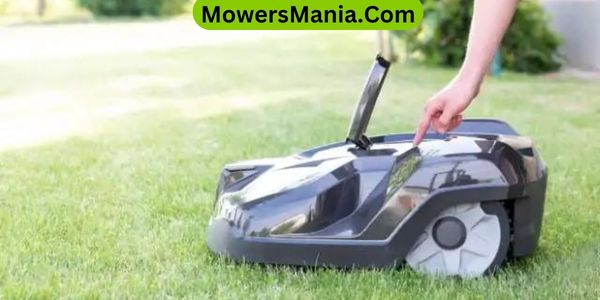Do robotic lawn mowers really work? Find out how they operate, their advantages, and factors affecting performance.
Get maintenance and troubleshooting tips, as well as real-world user experiences.

How Robotic Lawn Mowers Operate?
When using a robotic lawn mower, understanding how it operates is essential for successful and efficient lawn maintenance.
These autonomous machines are equipped with sensors that detect boundaries and obstacles, allowing them to navigate the lawn without human intervention.
Typically, they operate within a defined perimeter set by a boundary wire placed around the area to be mowed. This wire acts as a virtual fence, guiding the mower and preventing it from straying into areas where it shouldn’t be.
The robotic mower moves in a random or systematic pattern, depending on the model, to ensure even coverage of the entire lawn. It uses a mulching system to finely chop the grass clippings, which are then distributed back onto the lawn as natural fertilizer.
Most robotic mowers are designed to automatically return to their charging stations when their batteries are low, ensuring that they’re always ready to maintain the lawn.
Understanding these operational aspects is crucial for maximizing the effectiveness of a robotic lawn mower and achieving a well-maintained, tidy lawn with minimal effort.
Advantages of Robotic Lawn Mowers
To fully appreciate the advantages of robotic lawn mowers, you should consider their ability to autonomously navigate and maintain your lawn with minimal intervention.
These innovative devices offer numerous benefits that can significantly improve your lawn care experience:
- Time-Saving: Robotic mowers operate autonomously, saving you the time and effort required for traditional mowing.
- Consistent Results: They follow a set schedule, ensuring that your lawn is consistently maintained at the optimal height.
- Quiet Operation: Unlike traditional mowers, robotic mowers operate quietly, minimizing noise pollution in your neighborhood.
- Mulching Capability: Robotic mowers finely chop grass clippings, returning nutrients to the soil and promoting a healthier lawn.
- Safety Features: Many robotic mowers are equipped with sensors to detect obstacles and avoid potential hazards, providing a safe mowing environment for children and pets.
With these advantages, robotic lawn mowers offer an efficient and convenient solution for maintaining a well-kept lawn, allowing you to enjoy more free time without compromising the beauty of your outdoor space.
Factors Affecting Robotic Mower Performance

Your robotic mower’s performance can be affected by several factors, including the size and slope of your lawn, the complexity of its layout, and the presence of obstacles.
The size of your lawn is a crucial factor as it determines the mower’s capacity to cover the entire area efficiently.
Additionally, a flat lawn is more conducive to the optimal performance of a robotic mower compared to a steeply sloped one.
The complexity of your lawn’s layout, such as narrow passages or intricate landscaping, can also impact the mower’s ability to navigate and maintain consistent coverage.
Furthermore, the presence of obstacles like rocks, tree roots, or garden decorations can hinder the mower’s movement and potentially cause damage.
| Factors Affecting Robotic Mower Performance | Description |
|---|---|
| Lawn Size | Larger lawns may require longer mowing times and could require a more powerful mower. |
| Slope | Steep slopes can affect the traction and maneuverability of the robotic mower. |
| Lawn Layout Complexity | Intricate layouts with narrow passages may pose challenges for the mower’s navigation. |
| Obstacles | Presence of obstacles such as rocks, tree roots, or garden decorations can impede the mower’s movement and cause damage. |
Maintenance and Troubleshooting Tips
As you continue utilizing your robotic lawn mower, prioritizing regular maintenance and promptly addressing any issues is essential for ensuring its optimal performance.
Here are some maintenance and troubleshooting tips to keep your robotic lawn mower in top shape:
- Clean the Blades Regularly: Grass, twigs, and debris can accumulate on the blades, affecting cutting performance. Regularly clean the blades to prevent clogging and maintain efficiency.
- Check for Software Updates: Keep your robotic mower’s software up to date to ensure it operates with the latest improvements and bug fixes.
- Inspect the Boundary Wires: Periodically check the boundary wires for any damage or displacement. Properly functioning boundary wires are crucial for guiding the mower and preventing it from straying into unwanted areas.
- Monitor the Battery Life: Keep an eye on the battery life and charging performance. Replace the battery if it no longer holds a charge effectively.
- Addressing Technical Issues Promptly: If you notice any technical issues such as erratic movement or connectivity problems, refer to the user manual for troubleshooting steps or contact customer support for assistance.
Real-World User Experiences

In real-world scenarios, users have reported significant time savings and improved lawn appearance with robotic lawn mowers.
Many users have expressed satisfaction with the hands-off approach to lawn maintenance that robotic mowers provide.
They appreciate not having to spend their weekends mowing the lawn, as the robot handles the task efficiently and quietly. Furthermore, users have found that their lawns have become more consistently and evenly cut, leading to a neater and more manicured appearance.
Additionally, users have highlighted the convenience of not having to deal with grass clippings. Robotic mowers continuously cut the grass into fine clippings that are left on the lawn, acting as a natural fertilizer as they decompose. Users have reported healthier and greener lawns as a result.
Moreover, users have found that robotic mowers are easy to set up and program, requiring minimal intervention once they’re in operation.
The peace of mind that comes with knowing the lawn is being taken care of regularly is also a significant benefit reported by users.
Frequently Asked Questions [FAQs]
Can Robotic Lawn Mowers Be Used on All Types of Grass, Including Thick or Uneven Terrain?
Yes, robotic lawn mowers can handle all types of grass, including thick or uneven terrain. They use sensors to navigate and adapt to different surfaces, ensuring an even cut without getting stuck.
Are There Any Safety Concerns or Risks Associated With Using a Robotic Lawn Mower, Especially Around Children or Pets?
When using a robotic lawn mower, it’s important to consider safety concerns around children and pets. Always supervise their use, ensure all safety features are functioning properly, and keep the area clear.
How Do Robotic Lawn Mowers Handle Obstacles Such as Trees, Flower Beds, or Other Lawn Features?
When using a robotic lawn mower, it navigates obstacles like trees and flower beds by using sensors to detect and maneuver around them. It’s designed to handle various lawn features, making mowing easier for you.
What Is the Average Lifespan of a Robotic Lawn Mower, and What Kind of Maintenance Is Required to Keep It in Good Working Condition?
To keep your robotic lawn mower in good condition, perform regular maintenance like cleaning the blades and sensors, checking the battery, and keeping the docking station clear. With proper care, the average lifespan is around 5-10 years.
Are There Any Environmental Benefits to Using a Robotic Lawn Mower, Such as Reduced Emissions or Lower Energy Consumption?
Using a robotic lawn mower can provide environmental benefits, such as reduced emissions and lower energy consumption. It operates on electricity, reducing the need for gas-powered mowers, and its efficient design helps minimize environmental impact.
Conclusion
So, do robotic lawn mowers really work? Absolutely. They operate autonomously, saving you time and effort, and have numerous advantages over traditional mowers.
However, their performance can be affected by factors like terrain and battery life. Regular maintenance and troubleshooting can help keep them running smoothly.
And, according to real-world user experiences, many people have found robotic mowers to be a game-changer for their lawn care routine. Overall, they’re a convenient and effective option for maintaining your lawn.



